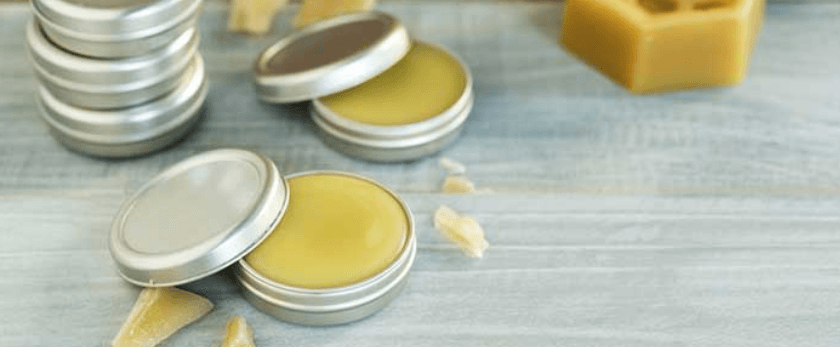As we become more aware of the impact our daily choices have on the environment, many of us are looking for ways to reduce our carbon footprint and live a more sustainable lifestyle. One simple and effective way to do this is by making your own homemade lip balm. Not only is it better for the planet, but it also allows you to control the ingredients and customize it to your liking. In this article, we will discuss why store-bought lip balm is bad for the environment, the benefits of making your own, and provide a step-by-step guide on how to make your own homemade lip balm.
Why Store-Bought Lip Balm is Bad for the Environment
- Plastic Packaging: Most store-bought lip balms come in plastic packaging, which is a major contributor to the global plastic pollution crisis. According to National Geographic, 91% of plastic is not recycled, and it can take up to 1,000 years to decompose. This means that the plastic packaging from your lip balm will likely end up in a landfill or the ocean, where it can harm wildlife and pollute our ecosystems.
- Harmful Ingredients: Many commercial lip balms contain harmful ingredients such as parabens, phthalates, and synthetic fragrances. These chemicals not only have negative effects on our health, but they also have a detrimental impact on the environment. When we apply these lip balms, the chemicals can leach into our skin and eventually end up in our water systems, causing harm to aquatic life.
- Production and Transportation: The production and transportation of store-bought lip balms also contribute to carbon emissions and pollution. The ingredients used in these products are often sourced from different parts of the world, and the packaging is manufactured in factories that emit greenhouse gases. By making your own lip balm, you can reduce your carbon footprint and help combat climate change.
Why Making Your Own Lip Balm is Better for the Environment
- Reduce Plastic Waste: By making your own lip balm, you can eliminate the need for plastic packaging. Instead, you can use reusable or biodegradable containers, such as glass jars or metal tins, to store your homemade lip balm. This not only reduces plastic waste but also saves you money in the long run.
- Natural and Sustainable Ingredients: When you make your own lip balm, you have control over the ingredients used. You can opt for natural and sustainable ingredients, such as beeswax, coconut oil, and essential oils, which are better for your health and the environment. These ingredients are also often sourced locally, reducing the carbon footprint of your lip balm.
- Customizable: Making your own lip balm allows you to customize it to your liking. You can choose the scent, flavor, and consistency that you prefer, making it a more enjoyable and personalized experience. You can also experiment with different ingredients and find what works best for your lips.

How to Make Your Own Homemade Lip Balm
What You Will Need:
- 1 tablespoon beeswax pellets
- 1 tablespoon coconut oil
- 1 tablespoon shea butter
- 10-15 drops of your preferred essential oil (such as peppermint, lavender, or citrus)
- Double boiler or a heat-safe bowl and pot
- Small containers for storing the lip balm (glass jars or metal tins work well)
- Measuring spoons
- Stirring utensil (such as a spoon or spatula)
- Labels (optional)
Directions:
- In a double boiler or a heat-safe bowl placed over a pot of simmering water, melt the beeswax pellets, coconut oil, and shea butter together. If using a heat-safe bowl, make sure it is not touching the water.
- Once melted, remove the mixture from heat and let it cool for a few minutes.
- Add 10-15 drops of your preferred essential oil and stir well. You can adjust the amount of essential oil depending on how strong you want the scent to be.
- Carefully pour the mixture into small containers, leaving a little room at the top for the lip balm to expand as it cools.
- Let the lip balm cool and solidify for about 30 minutes.
- Once solid, you can add labels to your containers if desired.
- Your homemade lip balm is now ready to use! Apply it to your lips as needed for soft, moisturized lips.
Responsible Disposal of Homemade Lip Balm
When your homemade lip balm is finished, it's important to dispose of it responsibly. Here are a few options for proper disposal:
- Reuse the container: If you used a glass jar or metal tin to store your lip balm, you can clean it out and reuse it for your next batch or for other purposes.
- Compost the ingredients: If your lip balm is made with all-natural ingredients, you can compost it. Simply scrape out the remaining balm and add it to your compost bin.
- Recycle the container: If you used a plastic container, check the recycling guidelines in your area to see if it can be recycled. If not, consider repurposing it for storage or crafts.
- Properly dispose of the container: If the container cannot be reused or recycled, make sure to dispose of it properly in the trash. Do not litter or leave it in the environment.
In conclusion, making your own homemade lip balm is a simple and effective way to reduce your environmental impact and take control of what you put on your lips. By using natural and sustainable ingredients, you can have soft, moisturized lips while also contributing to a healthier planet. So why not give it a try and see the benefits for yourself? Your lips and the planet will thank you.










